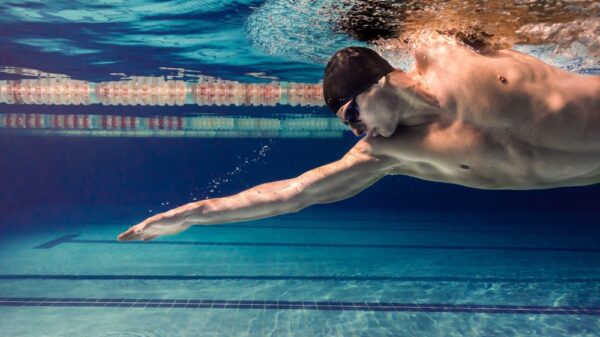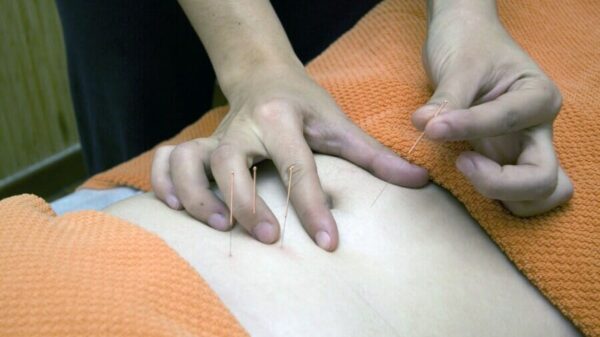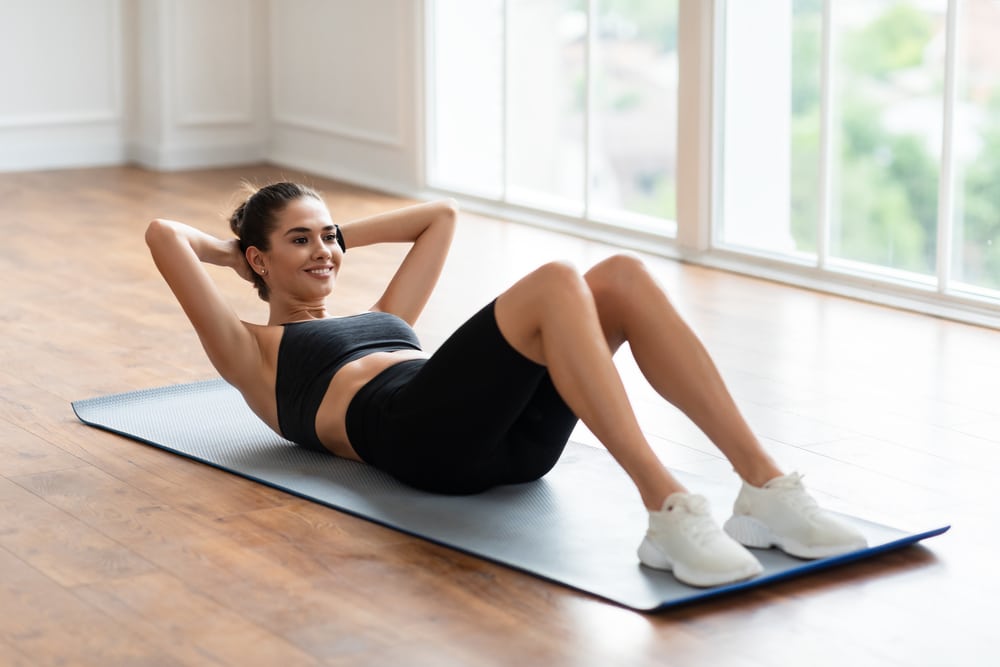Have you ever observed how a specific exercise identified as an “abs exercise” might also be referred to as a “core exercise” in different situations? The fitness world frequently employs both phrases interchangeably, resulting in diverse interpretations of what each term signifies. Furthermore, there’s considerable overlap between these two areas.
Despite this, important differences exist between abs and the core. Simply put, while your core encompasses your abs, the opposite is not true; your abs are merely a component of your core. It’s crucial to strengthen your abs, yet focusing solely on them without engaging the rest of your core is inadequate.
To delineate the differences between core and abs exercises and to obtain practical guidance on enhancing both areas, we consulted two fitness specialists.
What makes up your core?
According to Mathew Forzaglia, CPT, CFSC, a certified personal trainer and functional strength coach, your core spans from your hips to the base of your chest. “We’re talking about your pelvic floor, internal and external obliques, transverse abdominals, rectus abdominals, and spinal erectors,” he explains.
You can imagine your core as being akin to a corset or a weightlifting belt. It also includes the quadratus lumborum in your lower back, as noted by physical therapist and certified strength and conditioning specialist Grayson Wickham, PT, DPT, CSCS, founder of Movement Vault. “Considering the core means looking at all the muscles surrounding the abdomen,” he adds.
The core provides a foundation for support and stability. It protects your organs and spine while helping you maintain proper posture and manage internal pressure. The core muscles are also engaged in trunk flexion, lateral flexion, extension, and rotation. Essentially, activities like twisting, bending sideways, arching, and rounding your back all rely on core strength.
Understanding your abs
The term “abs” typically refers to the abdominal muscles, primarily the rectus abdominis. According to Forzaglia, “These are the ‘six-pack abs’ visible from the front.” Your abs facilitate spine flexion and protect the internal organs they encase.
However, your abs comprise more than just the rectus abdominis; they also include the internal and external obliques, transverse abdominis, and the pyramidalis, a smaller muscle that reportedly tenses the connective tissue running along the center of the rectus abdominis.
Similar to the core, your abs contribute to support, stability, mobility, internal pressure control, and protection.
Core versus abs: The key distinction
Your abs are part of the core, which also includes all other muscles that contribute to your midsection, such as those in the pelvic floor, spinal erectors, and quadratus lumborum. In essence, “core” serves as a broad term encompassing your entire midsection, whereas “abs” refers to a specific group of muscles within that core.
The benefits of a strong core
Think of your body as a house, with the core acting as its structural framework, according to Forzaglia. “A weak framework can make the entire house prone to collapse,” he emphasizes, noting that an unstable core can cause imbalances and compensatory movements, leading to injuries.
Wickham adds that a weakened core might result in tightness in other body areas, especially the hips. “Your body is always striving for stability. If your core lacks it, you’ll likely compensate by seeking stability from the nearest available joint,” he explains.
Enhancing core strength not only shields you from inefficient movement patterns, discomfort, and injuries but also improves your posture, countering the effects of prolonged sitting or slumping. Studies suggest that a robust core may improve athletic performance by optimizing both power and movement control.
“And we should remember that everyone’s an athlete,” Wickham asserts. “Everyone performs some form of athletic movement daily, whether it’s bending and twisting to lift a 10-pound box or raising a barbell off the ground.”
Recommended core exercises for your routine
Activate your entire midsection in your next strength training session with the following core exercises, as demonstrated by Forzaglia. You can select a few to integrate into your workout routine or perform them consecutively as a core-focused circuit. You will need a large exercise ball and at least one set of dumbbells or kettlebells.
1. Bear Crawl
- Start on all fours in a tabletop position, with your wrists under your shoulders and your knees beneath your hips.
- Keep your back flat, neck neutral, and engage your core while lifting your knees slightly off the floor.
- Simultaneously move your right hand and left foot forward, then alternate with your left hand and right foot.
- Continue to move forward by alternating limbs for the designated number of steps or distance.
- Next, retrace your steps backward using the same alternating arm and leg motion to return to your starting point.
- Repeat.
2. Stir the Pot
- Position yourself on your knees in front of a large exercise ball, placing your forearms on top of it.
- Lift your knees off the floor and shift your weight forward onto the ball, entering an elevated plank position.
- Maintain stability in your torso and hips while making circular movements with your arms in a clockwise direction to “stir the pot.”
- Switch directions to counter-clockwise.
- Alternate directions for the specified number of repetitions.
3. Half-Kneeling Halo
- Assume a half-kneeling position with your right foot forward and left foot extended behind you.
- Hold a kettlebell or dumbbell at chin level with both hands.
- Move the weight around your head in a “halo” pattern: raise it to the outside of your left ear, circle it to the back of your head toward your right ear, and return it to chin level in front of you.
- Repeat the halo motion in the opposite direction.
- Continue this sequence for the prescribed number of repetitions.
4. Farmer’s Carry
- With a kettlebell or dumbbell in each hand, stand with feet hip-width apart and arms at your sides. Keep your shoulders back, chin up, and core engaged.
- Gradually walk forward for the designated number of steps or distance, focusing on keeping your chest lifted and your rib cage aligned over your hips.
Effective abs exercises to add to your routine
For a more targeted abs workout, challenge yourself with these four movements demonstrated by Forzaglia. Like the core exercises, you can either incorporate them into your regimen or complete all four as a circuit. For these exercises, you will require an abs roller, a pull-up bar, and a heavy weight or a sturdy structure such as a weightlifting rig or pole.
1. Abs Rollout
- Kneel on the ground and hinge forward at your hips so your shoulders are directly over your wrists while gripping the abs roller handles.
- With your core engaged and arms extended, lean forward at your knees, allowing the abs roller to roll out before you. Move only as far as you can while keeping your back flat and neck neutral.
- Engage your abs to pull the abs roller back to the starting position.
- Continue for the recommended number of repetitions.
2. Hanging Knee Lift
- Grip an overhead bar with your hands slightly wider than shoulder-width apart, palms facing away from you.
- Lift your feet off the ground so you’re hanging from the bar.
- Keep your core engaged, ensuring your shoulders stay down and away from your ears, and lift your knees towards your chest.
- Lower your feet back down without allowing them to touch the floor.
- Again, raise your knees back up to your chest.
- Repeat for the specified number of repetitions.
3. Dragonfly
- Lie on your back, extending your arms straight overhead. Hold onto a heavy weight or the base of a sturdy structure, like a pole or a weightlifting rig, for support.
- Keep your lower back in contact with the floor and lift your feet slightly off the ground while keeping your legs straight. (If your lower back starts to arch, lift your legs slightly higher.) This is your starting position.
- Raise your legs until your knees and ankles are above your hips, then engage your core to lift your hips off the ground.
- Slowly lower your hips and legs until your feet are just above the ground, or slightly higher.
- Continue for the advised number of repetitions.
4. Hollow Hold
- Lie on your back with arms extended straight overhead.
- Activate your core and lift your shoulders, arms, legs, and feet off the floor. (The closer your legs and feet are to the ground, the more difficult the exercise becomes.) Ensure your neck remains neutral and your legs are straight and together.
- Maintain the hollow-body position for the specified duration.

































